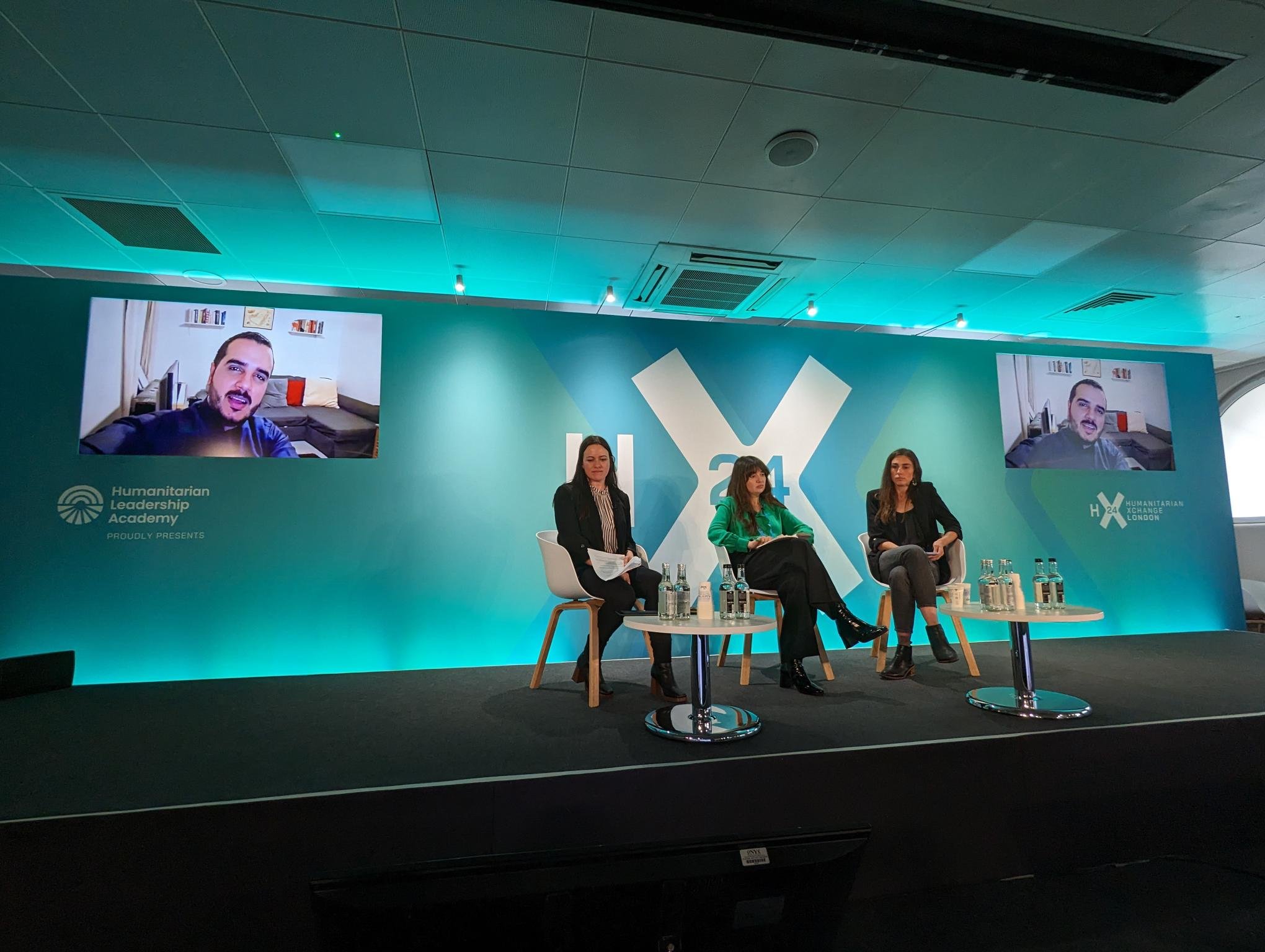Is truth the first casualty? The role of communication in crisis and humanitarian action
In crisis, information can make the difference between life and death. Loss or resilience. But at precisely the time people are forced to quickly make impossible decisions, a surge in rumours and ‘fake news’ can create confusion and harm. So, if transparency and truth are prerequisites for supporting people’s resilience, why are information and communication still often considered ‘nice-to-haves’ in humanitarian response?
At the inaugural Humanitarian Xchange, hosted by Save the Children and Humanitarian Leadership Academy in London, February 2024, CDAC Network convened a panel to explore the role of communication in crisis and humanitarian action. Chaired by Liz Hendry (Programme Lead, CDAC Network), the panel featured:
Ahmed Al Khameri – Team Leader, Chemonics
Annie Slemrod – Middle East Editor, The New Humanitarian
Meg Sattler – CEO, Ground Truth Solutions
Stijn Aelbers – Senior Humanitarian Advisor, Internews
Key takeaways
Counter misinformation by making even the most marginalised feel heard
Not feeling seen or heard is one of the major drivers of people turning to alternative channels. Therefore, rather than seeking to control the narrative or present a singular truth in order to mitigate misinformation, humanitarian communication should aim to acknowledge and amplify the diversity of people’s needs and experiences. Indeed, our humanitarian mandate should direct us to focus on ensuring that the most marginalised and at-risk populations have avenues for communication.
Humanitarian communications must focus on quality over quantity
The democratisation of information production through platforms such as social media has opened up huge opportunities, but also challenges, particularly around navigating information overload when critical decisions need to be made quickly. Humanitarian interventions can no longer aim to simply introduce more information into that cacophony – particularly as humanitarian communication represents only a tiny fraction of affected communities’ information flows and may not always be trusted. At the same time, not communicating can leave more space for unreliable information and manipulated narratives.
Less ego, more transparency and accountability
While it might feel natural for organisations to prioritise broadcasting achievements to donors and the media, humanitarians must first and foremost focus on two-way communication with the communities they serve. This must entail humility over branding, communicating even through uncertainty, and willingness to cede control of the narrative. For example, transparent communication with communities often focuses on tightly controlled topics (e.g. where and when assistance is provided). Yet data shows that affected people also want to understand broader issues, such as where money is being spent, where there are funding shortfalls and how are people selected for assistance.
Embrace local innovation and solutions
Affected people are the first responders to a crisis and the experts on the local context. They are using whichever communication channels work within their context to share vital information and coordinate assistance. Rather than imposing external and overly technical solutions, humanitarians can better address the needs of affected communities by meeting people where they are and supporting these locally led solutions. Trusted local journalists are also an underutilised asset.



